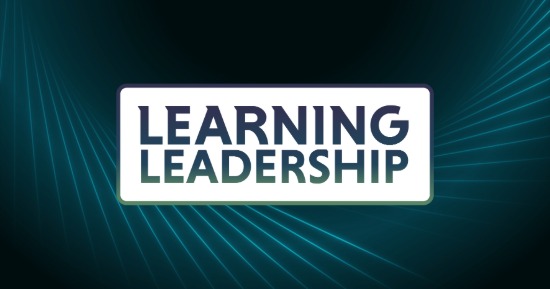Moving from the military to the civilian workforce presentsveterans with many challenge, key among them a significant culture shift:career paths, leadership styles, and collegial relationships are dramaticallydifferent in the military culture than in most modern workplaces, according toHeide Abelli, a senior vice president, content product manager at Skillsoft. That’swhy retraining or upskilling veterans requires a different focus than workingwith other populations.
Skillsoft’s approach—a heavy emphasis on scenario-basedlearning—works for all populations and demographics and is applicable in anyindustry, Abelli said. But she’s especially proud of the company’s focus on(and success with) veteran populations, both those seeking to succeed in theirjobs and those who are unemployed and transitioning to civilian jobs.
“The military has very clear career progressions. It is avery defined process for how individuals in the military can growprofessionally and build their careers,” Abelli said. On the other hand, incivilian organizations, “The individual is much more responsible for designingtheir career path and figuring out what potential growth paths might beprofessionally.”
The emphasis on personal responsibility for designing acareer path and advocating for oneself also flies in the face of the demeanorexpected from service members, who may be hesitant to speak up or challenge anofficer. One reason for this difference is that “Leadership styles in themilitary tend to be somewhat different from what we are now finding in mostorganizations,” Abelli said. “There is much more of a command-and-control typeleadership style, a more maybe authoritative leadership style, which is used inthe military for very good reasons. However, when you get into civilian life,there are many different leadership styles that you’ll find in organizations.And most companies now are moving toward what I would call collaborativeleadership.” Abelli added that individuals coming out of military service maynot know when to speak up or how to do so appropriately.
The issue arise in both employee-to-boss relationships andpeer relationships in the workplace. Learning to network, to persuade when onehas no direct authority, to give and accept feedback or coaching—these are all“soft skills” that are in high demand in modern workplaces, Abelli said—and allare areas where the culture change can be “jarring” for veterans.
An advantage of scenario-based eLearning is that it provideslearners with opportunities to “understand quickly, ‘Okay this is how it works,this is how it’s done,’ ” Abelli said. “If I can show you a scenario ofsomebody giving feedback or of somebody managing up to a boss or cultivatingrelationships with peers and how that actually happens in a real-life workcontext using scenario, then I can quickly accelerate your learning path inthat cultural challenge dimension.”
Scenario-based learning is effective
Scenario-based learning and eLearning that tends heavilytoward a narrative or storytelling approach are increasingly seen as ways toengage learners in material that is relevant and applicable. According toresearcher John M. Carroll, scenarios:
- Evoke reflection
- Are both concrete and flexible
- Afford multiple views of an interaction
- Promote work-oriented communication amongstakeholders
By providing realistic examples of, say, difficult conversationsor ways to promote an idea or make a suggestion without being confrontational,scenarios offer learners safe, low-risk environments to learn, try approaches(and make mistakes). This allows them to develop and practice skills that arecritical to obtaining and succeeding in civilian workplaces.
Scenarios and simulations are used extensively in militarytraining, so the format is familiar to many veterans. Simulation training isalso used in medical, trauma, disaster, and other training areas where errorscan be costly or risky.
Scenario-based training allows learners to instantly see theconsequences of a decision or action and increase their understanding of asituation quickly, without risk. “Ascompared to real world experience, this accelerated learning is one of theunequaled advantages of such products,”according to researchers Siddiqui, Khan, and Akhtar.
Abelli echoes the research findings. “Our training contentspecifically is so valuable for the veteran population because it is aboutgetting people up a learning curve who don’t have those years of experience inthe actual workplace setting,” she said. “It’s low risk for them becausethey’re not coming in and experiencing a negative consequence in a real-lifejob, but they can see things play out both positively and negatively in ascenario to give them that learning quickly in the context of what they arelikely going to be experiencing in the workplace.”
Scenario-based learning can be used for both soft skillstraining and for “hard skills” needed for success in a modern corporate office.This might include introducing veterans to collaboration tools, like Yammer andSlack, or office tools like Microsoft Office and Project, that, whileubiquitous in the corporate world, might not have been available to servicemembers in their military roles, Abelli said.
Skillsoft has developed a new leadership training programthat is 100 percent scenario-based, as well as fully accessible to veteranswith disabilities, she said. The new approach uses microlearningand allows learners to proceed at their own pace. Scenarios “work well foreverybody. But I think that veterans in particular can benefit fromscenario-based approaches because they don’t have that long rich experience inthe workplace,” Abelli said.
Skillsoft works both with corporations aiming to upskillemployees who are veterans and with programs helping unemployed veterans preparefor the civilian work world. One example is the Institute for Veterans and Military Families(IVMF) at Syracuse University, where unemployed veterans can master skills throughcertificate programs and other business curriculum courses. Abelli said that programfacilitators are encouraged to create a blended learning framework, where veterans complete the fundamental courses ontheir own, then come together into discussion groups to talk about thescenarios and themes raised in the eLearning. Metrics that Skillsoft hasgathered show that a vast majority of participants felt more confident in theirability to advance and to succeed at their jobs after completing the eLearning.
Upskilling veterans is vital to reintegrating them intocivilian life and work; scenario-based eLearning can help them bridge theculture gap while learning valuable skills that will enable them to grow theircareers and flourish in a collaborative, team-oriented modern workplace.
Resources
Carroll, John M. 1999. “Five Reasons for Scenario-Based Design.” IEEE Proceedings of the 32ndHawaii International Conference on System Sciences.
Siddiqui, Atiq, Mehmood Khan, and Sohail Akhtar. 2008. “Supply chain simulator: A scenario-based educational tool to enhance student learning.”Computers & Education 51 pp. 252–261.
Steadman, Randolph H. et al. 2006. “Simulation-based training is superior toproblem-based learning for the acquisition of critical assessment andmanagement skills.” Critical Care Medicine 34(1) pp. 151–157.









